Seeing bugs hopping, crawling, or wiggling along on your bathroom floor or in your bathtub can be most unsettling.
This comprehensive guide ventures into the hidden world of common bathroom bugs, offering insights into why they’ve chosen your bathroom as their new home and how you can effectively manage them.
Join us as we explore effective strategies to tackle each type of bug, ensuring your bathroom remains a place of hygiene and relaxation, free from unwanted guests.
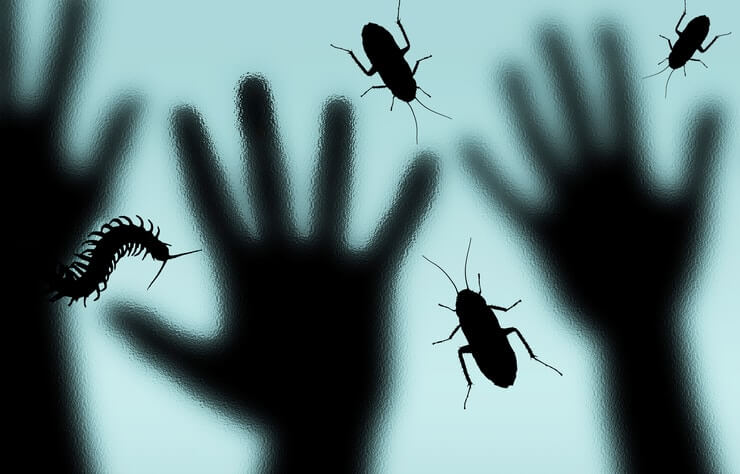
Bed Bugs
These tiny critters are, as their name indicates, usually found in your bed. However, bed bugs do show up in your bathroom too.
Bed bugs are about the size and shape of an apple seed.
If they have recently gorged on blood, they are more elongated in shape and may be redder in color.
They enjoy feeding on blood, usually from a human host.

While the CDC doesn’t consider bed bugs dangerous, they are blood feeders, which means they do bite humans and sometimes pets.
If you have an allergic reaction to their saliva, you may require medical attention.
Bed bugs can cause a secondary skin infection and irritability that can disrupt your sleep.
Bed bugs don’t live in the bathroom and typically get there through a human host.
Chances are you have taxied the bed bugs into your shower in the morning, so if you find them floating on your ceramic tiles after a shower, this is how they got there.
Luckily, a shower will remove any bed bugs from your body.
They will likely be flushed down the drain, but if they get to your laundry basket or bathroom rug, you may have a permanent resident.
If you find bed bugs in your bathroom or shower, read our guide on how to get rid of bed bugs in your bathroom and prevent their return.
Ants
Ants crawl into small spaces in your bathroom in pursuit of moisture.
Most common ants are small in size, and they may be the black, brown, or banded variety.
They are busy insects that gather water from your bathroom and return it to their nest.
In bathrooms, most commonly you will find house ants, pavement ants, pharaoh ants, and carpenter ants.
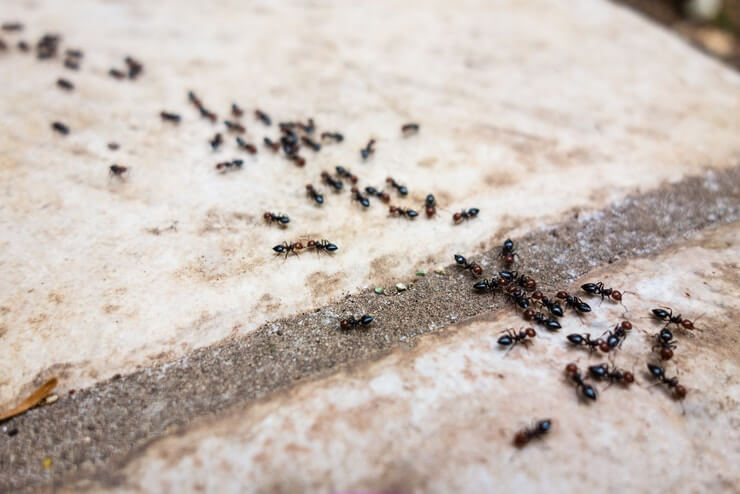
Usually, these ants nest in your bathroom or fetch water from leaking taps or drains, which is where you will find them.
They aren’t dangerous or poisonous, though the soldier ants can bite if cornered.
Some people have an allergic reaction to ants walking on their skin.
If you have an infestation of ants in the bathroom, follow our guide on eliminating ants in the bathroom and how to keep them from coming back.
Gnats
If you’ve noticed small gray or brown flies zooming in your bathroom, chances are you’ve got a gnat infestation.
These insects are attracted to moisture, dampness, mold, and rotting woodwork.
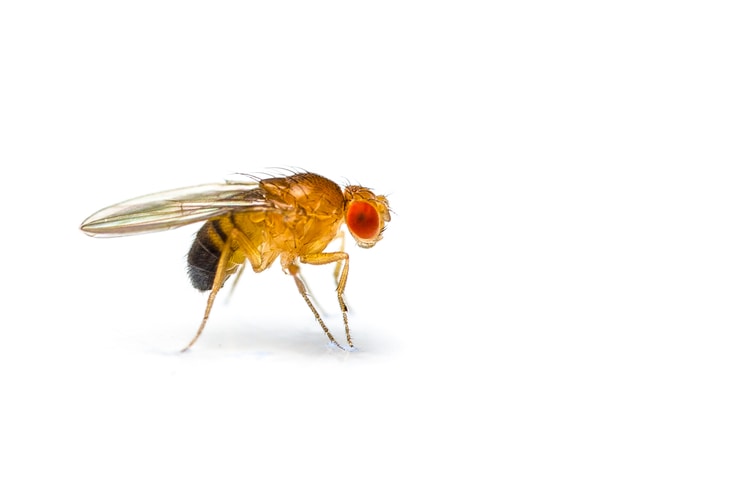
Be sure to close off leaking taps and clean out any stagnant water from your drains as this is why gnats commonly enter your bathroom and where they congregate.
If you have a laundry basket in your bathroom, be sure to empty it daily as stale clothes are a magnet to gnats.
While gnats aren’t really dangerous, their tiny bites can cause severe allergic reactions, so removing them is a priority.
Read our standalone guide on removing gnats from the bathroom and keeping them away.
Roaches
Roaches have brown segmented bodies with extra long antennae.
They scurry up bathroom pipes, crawl from drains, and fly in through windows.
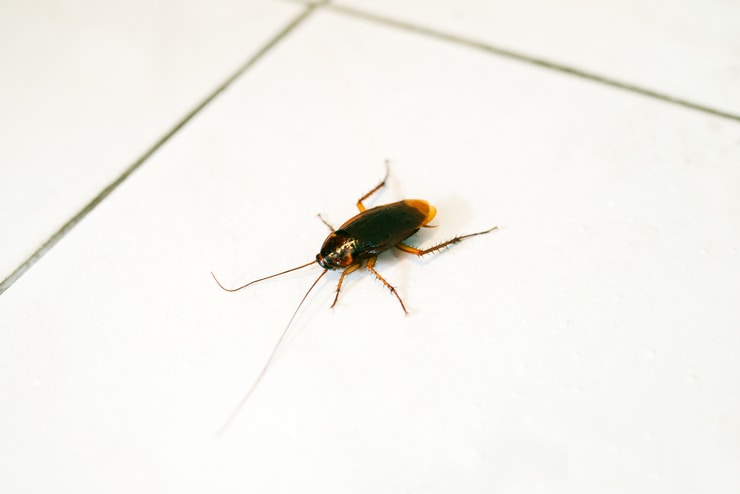
Roaches are instantly attracted to your bathroom as it is a moist place that offers them water, moldy growth to chew on, and warmth in winter.
Usually, the bathroom and kitchen aren’t far apart in a home either, so roaches can easily taxi between the two places, feeding, breeding, and multiplying!
Getting rid of roaches can be challenging and they are known carriers of pathogens and disease.
Since they crawl through filth, they pick up bacteria and other allergy vectors that cause disease and poor health.
If you keep finding roaches in your bathroom or shower, read our guide on how to get rid of roaches in the bathroom and prevent their return.
Silverfish
Silverfish are dark brown or silver crawling insects.
These insects are more of a nuisance than an actual danger, though if you accidentally pick one up, a silverfish will bite you.
People may have allergic reactions to silverfish bites, so don’t pick them up bare-handed.
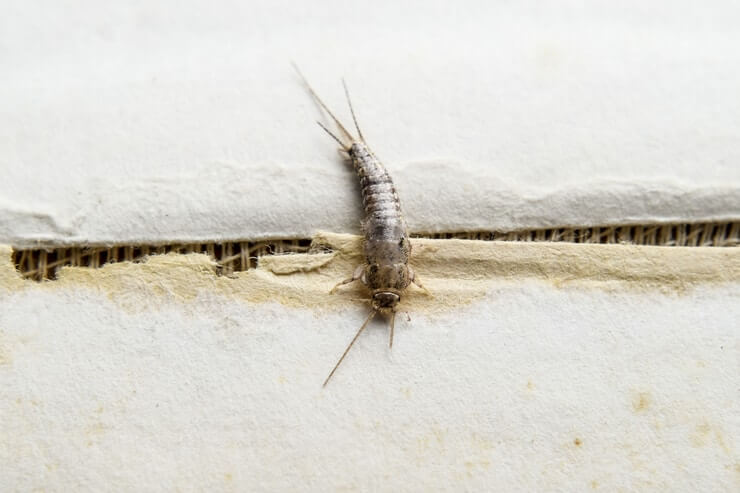
Silverfish are attracted to damp conditions, and they eat the polysaccharides or starchy compositions of laminate glue, shampoos, dandruff, and paper.
It’s not uncommon to see them scatter from your bathroom magazine rack.
While silverfish are mostly solitary, they do breed quite substantially if left unchecked, so take action if you see one.
Whether you remove the offending silverfish or set out poison traps for others, remove these wiggling insects as their love of paper can cause serious problems in your home.
Find out how to get rid of silverfish in your bathroom and how to prevent them from coming back.
Spiders
Spiders are pretty harmless insects, and they may be quite useful in bathrooms as they live off other insects.
That said, spiders are not pleasant bathroom visitors and depending on the species, they may be poisonous too.
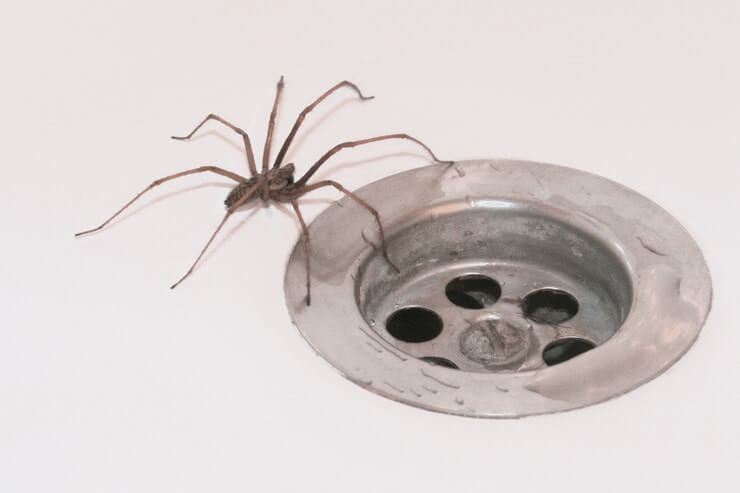
A single spider bite can cost your life. Even if the spider isn’t poisonous, it may cause an allergic reaction if it bites a person.
Getting rid of them is the only option. Luckily, there are ways to get rid of spiders in the bathroom without killing them.
Spiders crawl through narrow places, and they can gain access to your bathroom via pipes, drains, and cracks.
They easily squeeze through windows, under doors, and past air conditioning units, seeking water in your bathroom.
Since spiders may be drawn to other water-seeking insects, they scavenge for food by hunting or snaring insects.
The bathroom can be a food-rich environment for spiders.
Centipedes
Come winter, centipedes are one of the first insect types that seek warmth, water, and food in our homes.
Water is a centipede’s main goal, so it will move to the bathroom, specifically the bathtub or shower pan.
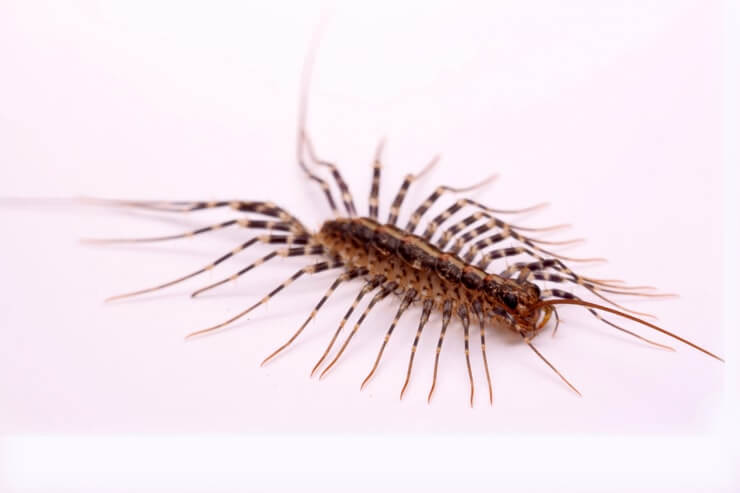
Centipedes have long antennae, and they can be dangerous with their bites triggering an allergic reaction.
Given the great speed at which their 15 pairs of legs can run, it is quite tricky to catch a centipede.
Centipedes love a bathroom, which is a quieter place than a kitchen, so they can snack on mold and other insects in peace.
To gain access to your bathroom, centipedes may crawl out of the drain or up pipes.
They are also known to nest in the insulation in your ceiling or in your basement.
If you struggle with centipedes showing up in your bathroom or shower, read our detailed guide on how to get rid of centipedes in the bathroom.
Mosquitoes
Mosquitoes love your bathroom since they are attracted to the heat and body odors they detect there.
Since mosquitoes prefer swampy, high-humidity places, they are easily attracted to a shower that steams up the room.
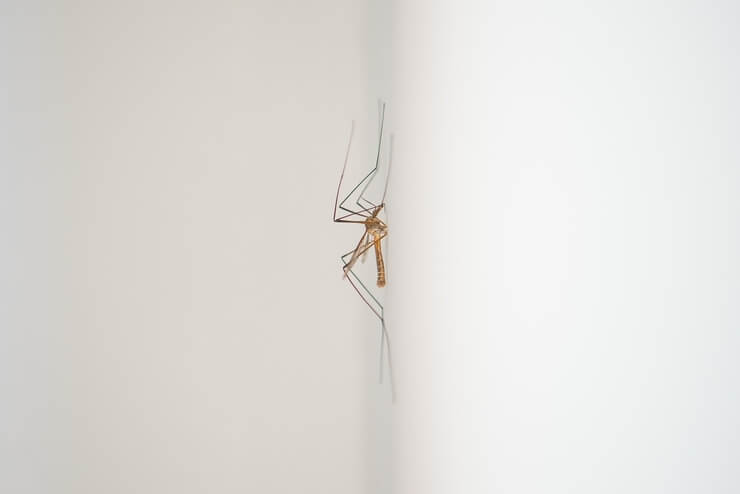
Mosquitoes go to bathrooms to breed, lay eggs, and find blood meals.
Getting rid of mosquitoes is a priority as they are disease carriers, and their bites itch and cause allergic reactions.
Mosquitoes are surprisingly difficult to get rid of, and while you may swat and kill a few, there will soon be more.
Due to their prolific breeding, you may find mosquito eggs in bathroom plants, shower drains, and even in damp or water-damaged bathroom cupboards.
To learn more read our separate guide on getting rid of mosquitos in your bathroom.
Slugs
While it may not seem like slugs are bathroom pests, they are found here.
Slugs love damp and cool conditions. They crawl up pipes, along drains, and enter your bathroom through open windows.
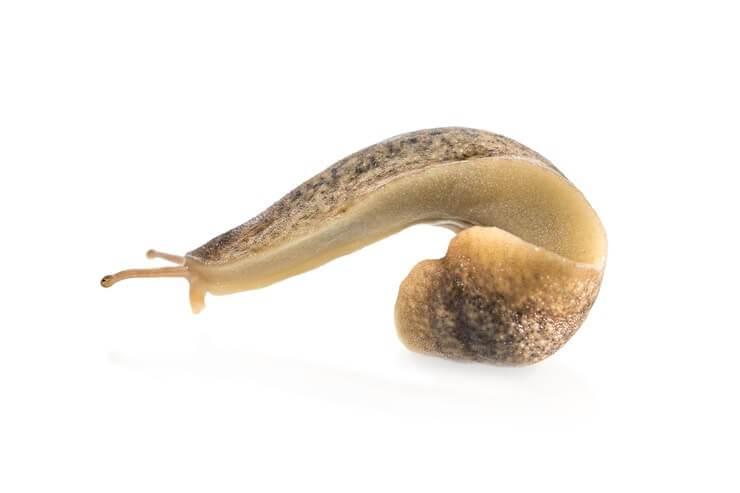
Slugs have a great sense of smell, and they can smell alluring scents like shower gel or the bathroom plant that’s gotten nice and moldy.
Slugs will find a way to crawl into the area—your bathroom—that offers them food.
Slugs aren’t aggressive creatures. They deposit a slimy residue on your bathroom floors, in your bath, and even on your towels.
This can be unsightly, and it can also trigger eczema and allergies in people.
If you have slugs in your restroom or shower, read our standalone guide on how to keep slugs away from your bathroom.
Springtails
Springtails are tiny bugs in your bathroom that leap from spot to spot.
These miniscule bugs, also called snow fleas, are less than one-sixteenth of an inch in size, and they are identified by their gray-purple scaled bodies.
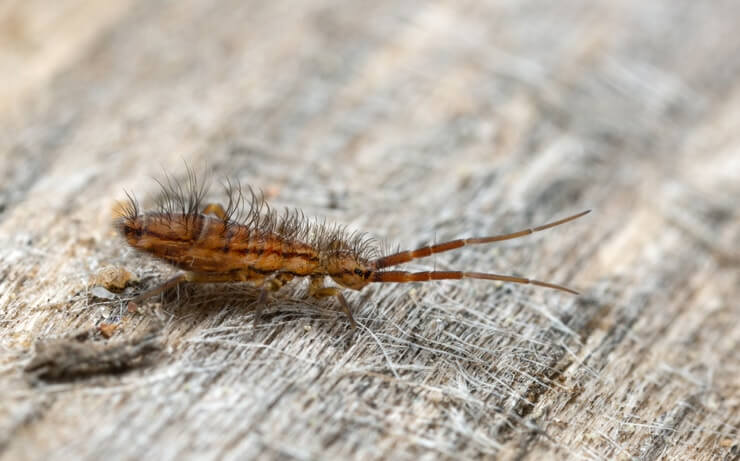
Snow fleas are attracted to water spills, mold, and other organic plant matter in bathrooms.
They nest in bathroom plants, and they love visiting your shower.
Springtails also love creeping into your bathroom through cracks in the walls and under doors and windows, and they are small enough to fit through even the tiniest opening.
While springtails aren’t toxic and they aren’t known to be disease carriers, they do become a nuisance due to their vast numbers in an infestation.
They can be difficult to catch and harder to exterminate.
We have a detailed guide with effective methods for getting rid of springtails in your bathroom.
Drain Flies
Drain flies are small brown or gray flies that bounce around your bathtub or shower pan.
While these small flies are hard to get rid of, they don’t generally bite and aren’t really toxic.
However, drain flies carry other harmful pathogens like bacteria since they crawl up drains, which is also where they breed.
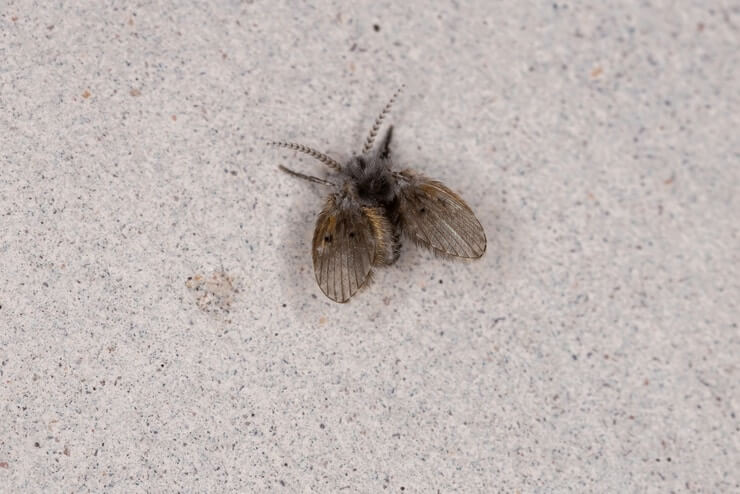
If you have drain flies in your bathroom, the chances are pretty good that you’ve got a drain problem.
Drain flies feed and breed in backed-up drains and blocked pipes.
The soapy scum and sludge that line poorly functioning plumbing and pipes are an ideal place for their eggs to hatch and produce larvae known as black worms.
When an infestation is extreme, drain flies cause plumbing problems that can cost you thousands of dollars.
Read our separate guide on how to fix a drain fly problem in the bathroom and keep them away.
Black Worms
If you’ve got drain flies, it won’t be long before you’ll see their offspring, which are black worms, wiggling in your bathtub, shower, and your toilet bowl.
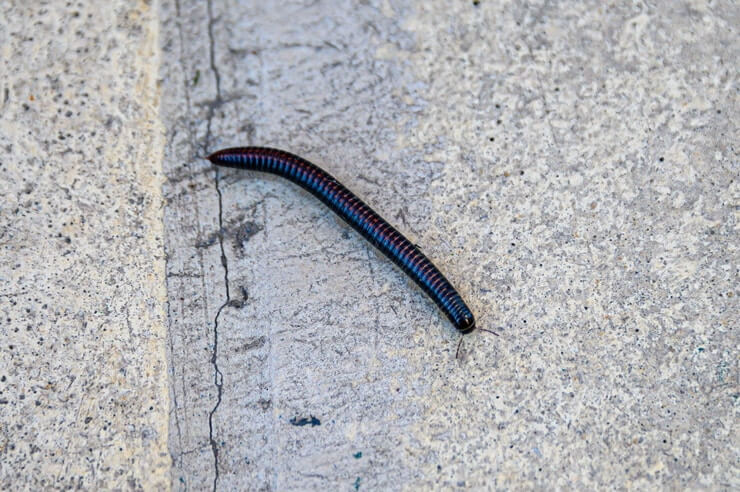
When you see them in your bathtub or shower drain, the worms have hatched in the drain pipes and crawled up toward oxygen.
With an almost endless supply of new eggs hatching, it may seem like a losing battle to kill all the black worms.
To eliminate the infestation, you need to get rid of the eggs that are continuously hatching.
A blocked drain is an unhealthy drain, and black worms crawl through the sludge, so they carry pathogens and bacteria.
Having them crawl around your shower pan can lead to eczema and allergic reactions.
They may not bite, but they can irritate your skin and cause serious allergies.
If black worms are troubling you, we wrote a complete guide on how to eliminate black worms in your bathroom.
Weevils
Weevils are black or brown beetle-shaped bugs with pointy noses.
They are about a quarter the size of a grain of rice, and you may be puzzled at seeing a weevil in your bathroom.
Weevils normally tend to breed and cause problems in your pantry or in the kitchen as they infest dry foods like flour and cereals.
Boxes, grocery bags, and open windows are how they gain entry to your home.
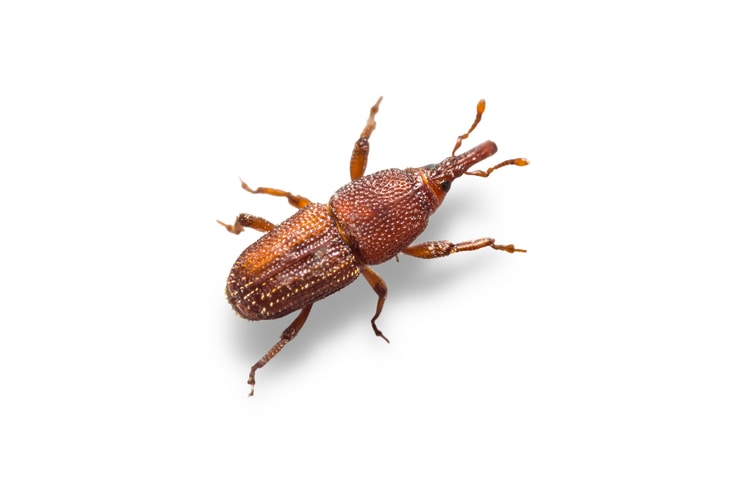
Weevils are a nuisance, and while they aren’t known to carry diseases, they shouldn’t be encouraged in your home as they will breed, and none of your dried foods will be safe again.
A weevil in your bathroom can quickly turn into several hundred weevils in your kitchen, in your flour container, or crawling around your cereal dispenser.
Learn how to get rid of weevils in your bathroom and prevent their spread to the rest of your home.
Earwigs
Earwigs have a thrice-segmented body that measures in at about a quarter of an inch to an inch in length.
Earwigs have long bodies that are either brown with red markings or red-brown with black markings.
They also have antennae, a double set of wings, and a large set of pincers.
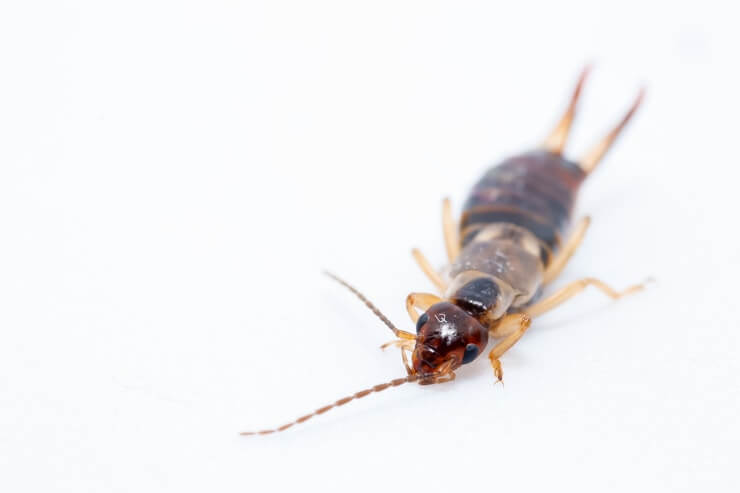
Earwigs are fond of moist and warm places, which is why they are attracted to the bathroom.
They can usually be found in the bathtub or on your shower floor, crawling around the drain where they thrive in the moisture.
While earwigs aren’t dangerous, they can make a huge stink, literally, as part of their defensive behavior by releasing a pungent liquid.
Earwigs may pinch you if you try to pick them up, but this is usually not harmful unless you have an allergic reaction to them.
Read our standalone guide on earwigs in the bathroom and find out what else earwigs are doing in your bathroom and how to evict them.
Termites
Some of the worst bugs to have in your bathroom are termites.
It’s easy to identify their quarter to half an inch white or light brown bodies.
Unlike ants, termites have soft bodies, and they have large antennae too.
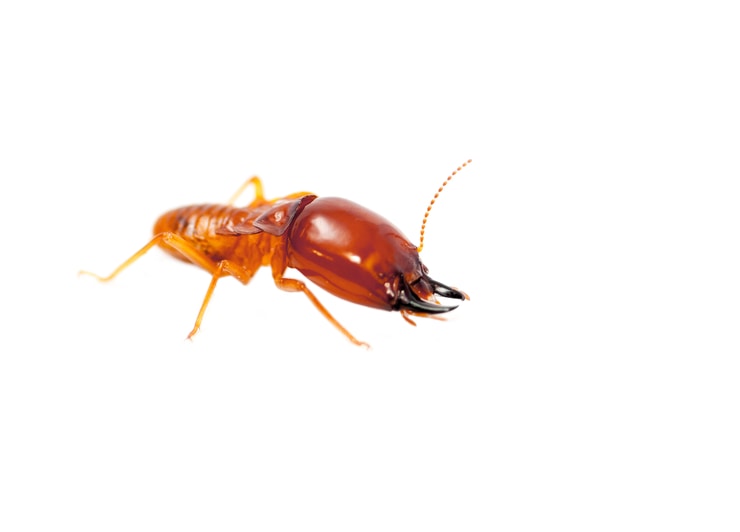
Termites are swarm insects, and you will likely see worker termites in your bathroom, where they are attracted to water.
Gathering water from your leaking pipes or even from the condensation in your shower, termites build their funnel-shaped nests.
If your bathroom has hollow ceramic tiles, it creates a perfect space for termites to nest close to their water source, and your problems become huge.
Their tunneling and nest-building damages walls, and they eat into drywalling too.
While termites aren’t toxic and don’t carry diseases, they cause massive property damage and should be exterminated immediately.
Our separate guide will help you discover the best ways to remove termite nests and ensure termites don’t return to your bathroom.
Psocid Mites
If you have mold in your bathroom, chances are you’ll attract mites, like psocid mites. These are also known as book mites.
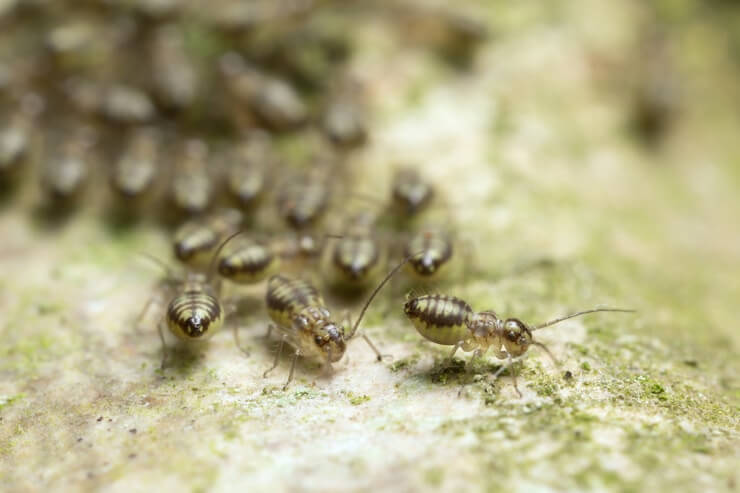
Psocid mites differ in appearance, but most resemble tiny light brown termites.
Their size ranges from less than a tenth of an inch to a quarter of an inch, and they aren’t harmful to people.
They won’t bite or contaminate your bathroom, but they do eat mold spores, which means they can potentially carry these with them.
Mold spores can cause severe allergies.
A damp and moldy bathroom is ideal for these mites, and they love to munch on moldy patches or damp sections of your wooden bathroom vanity, as well as any damp papers that may be in your bathroom.
Paper, packaging, and magazines are how they get taxied into your bathroom.
Use our standalone guide to learn about the best ways to get rid of psocid mites in the bathroom.

